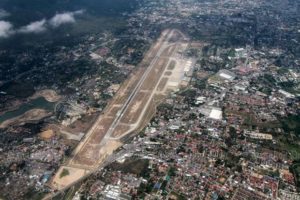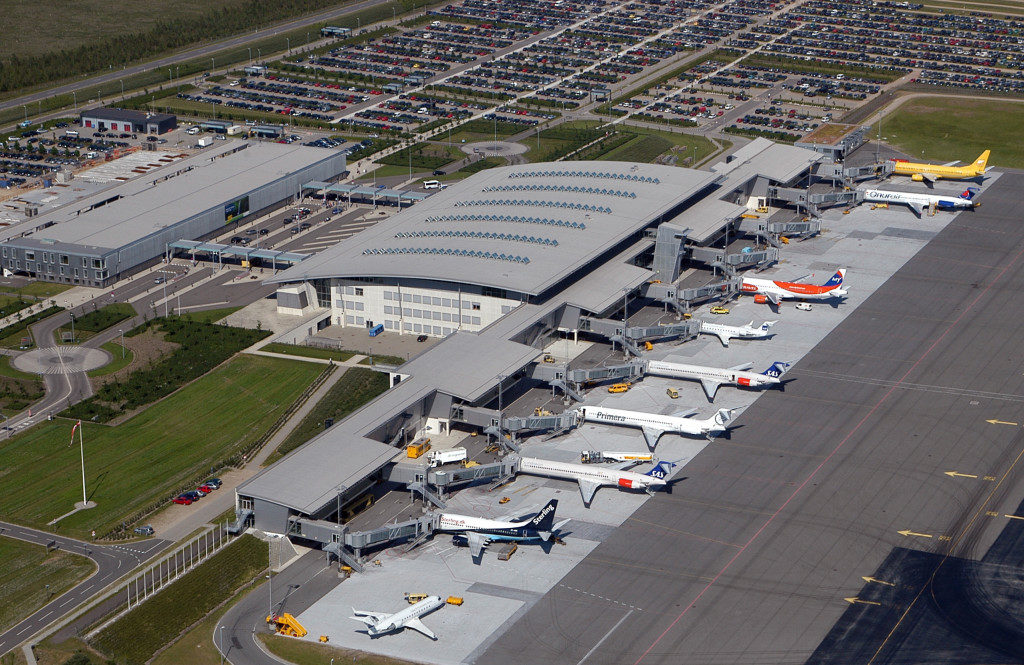Prof. Max Hirsh from the University of Hong Kong examines some of the actions small airport hubs can take to make the most of their landside proposition
Landside development has become an essential part of the airport business model. Often, these projects are branded as airport cities: large-scale commercial and industrial zones that are designed to meet the needs of mega-hubs serving upward of 50 million passengers a year. These global hubs are at the forefront of innovation, and the decisions that they make set the agenda for every aspect of the airport industry — including landside real estate.
But guess what? Most airports aren’t mega-hubs. In fact, there are only about 30 of them around the world. And when it comes to landside development, most airports have neither the same challenges, nor the same opportunities, that mega-hubs do. Nevertheless, many smaller airports look to these global hubs for guidance and try to implement a scaled-down version of their airport city plans — often with disappointing results.
Small hubs — airports that serve less than 10 million pax — constitute the majority of airports worldwide. They enjoy several distinct advantages compared to their much larger cousins. Instead of trying to copy airport city plans made for mega-hubs, how can these rising stars come up with landside growth strategies that leverage their own unique assets? Let’s start by looking at the four advantages that set small hubs apart.

Location, location, location
Many global hubs have been built since the 1970s in places that are far from the urban core. Their airport city projects struggle to attract businesses to what is essentially a rural site. By contrast, small hubs are often located on older airfields near the central business district (CBD). Over time, the city has grown around them, making landside real estate more valuable. While it might take you an hour to reach a big hub from the city center, many small hubs are just a quick drive from downtown. That’s a huge locational advantage. Successful small hubs can leverage that proximity to develop non-aeronautical activities that cater to local residents and local industries.
A supportive community
Mega-hubs are often in the spotlight of intense national debates. With planning areas that cut across multiple jurisdictions, their expansion goals suffer from chronic setbacks due to the sheer number of stakeholders involved, and due to the complexity of their conflicting interests. By contrast, small hubs benefit from the close-knit relationships that are typical of smaller cities and smaller business communities. They recognize the importance of aerial connectivity for the local economy, and they want their airport to succeed. This creates a mindset that focuses on bringing in investment through cooperation.
One example: expedited permitting. At large hubs, it can take years — plural — to obtain all the permits that are needed to develop and build a landside project. Smaller hubs are often able to get the paperwork done in less than a month. That’s because they work hard to create a flexible and proactive culture: where the airport, the city, and economic development agencies work together for mutual benefit.

Focus on local industries
At small hubs, the local economy tends to be dominated by a discrete number of industries, with only a handful of dynamic startups and large employers. Talking to them about their current needs and future goals can very quickly lead to concrete plans. A focused business development effort, driven by a team that is highly knowledgeable about one or two target industries, makes potential clients “feel the love” in a way that mega-hubs find difficult to match. Small hubs not only offer clients more face-time, but also a more flexible approach to landside development.
For example, Edmonton Airport, Canada, recently partnered with a local cannabis manufacturer to help develop one of the region’s fastest growing industries. Together, they built a 100,000m² (1,100,000ft²) production and distribution center, which will double in the coming years. For the airport, that’s translated into nearly US$400m in investments from a single firm.
A distinct profile
Small hubs often have a very specific user profile. While large airports struggle to accommodate a wide range of people and products, smaller ones have a pretty good sense of who their customers are, and what types of facilities will appeal to them.
Some small hubs, like Brussels Charleroi, Belgium, serve the low-cost market; while others, such as London City, cater to business travelers. Warm-weather destinations like Palm Springs, California, host tourists and retirees. Leipzig, Germany, and Luxembourg don’t welcome a lot of passengers, but they punch above their weight when it comes to cargo. Other small hubs, like Canberra, Australia, and Regina, Canada, operate as gateways for government workers, or for professionals in the oil, gas and mining industries. These distinct profiles can be a real advantage when it comes to creating people-focused strategies that are tailored to the unique needs and desires of specific kinds of customers.
To recap, the main advantages of small hubs are proximity to the city, the ability to implement projects more quickly, and a closer relationship with customers, clients and decision makers. Now for the bad news. The most obvious disadvantage is that small hubs simply have far fewer passengers and employees than mega-hubs, which translates into lower demand for things like hotels and food and beverage (F&B). And unless your airport happens to be located in a place where a lot of high-value or time-sensitive goods are being made, it’s unlikely that there will be much demand for just-in-time cargo facilities.
Aware of these crucial differences, successful small hubs don’t just copy what the mega-hubs do. Instead, they propose innovative landside strategies that leverage their unique advantages.
Compared to larger airports, small hubs are much more dependent on local customers — people who aren’t actually flying — in order to drive successful developments around the airport.
These rising stars therefore need to be much more attuned to the specific needs and desires of local residents, local industries, and local business owners.
Read the original article on airporturbanism.com.
Bio:
Max Hirsh is a professor at the University of Hong Kong and an expert on airports and urban development. He provides thought leadership for the aviation industry through his website airporturbanism.com.

